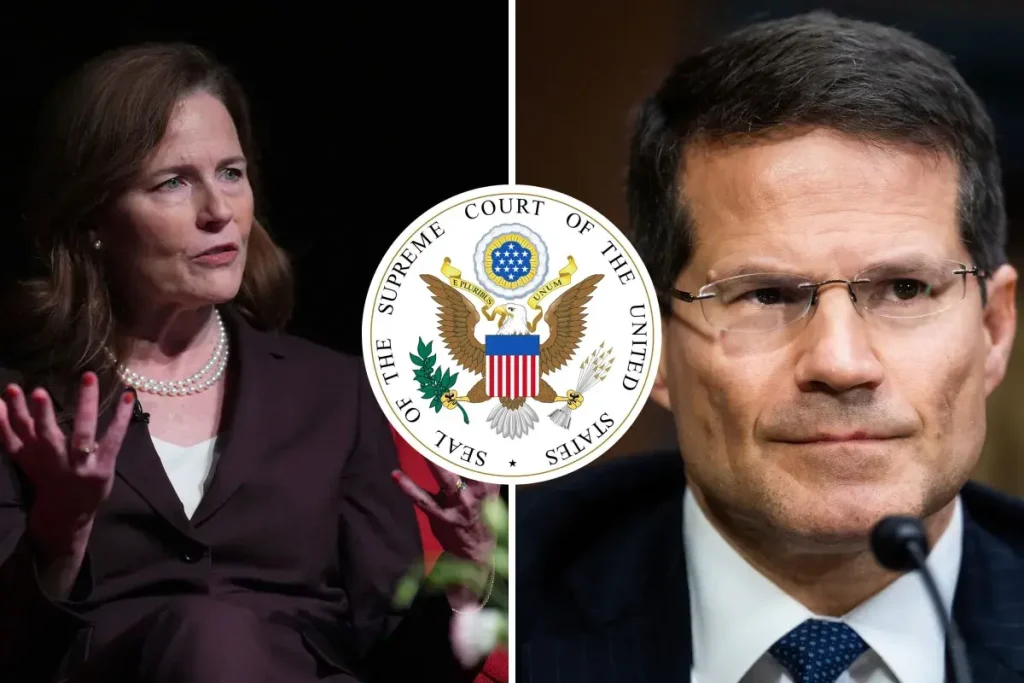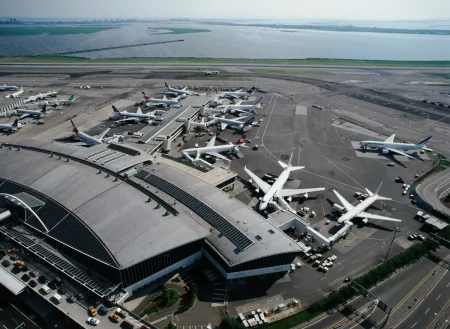Supreme Court Confronts Presidential Trade Powers in High-Stakes Tariff Case
In a riveting Supreme Court hearing that may redefine the boundaries of presidential power, Justice Amy Coney Barrett delivered unexpectedly sharp questioning to the lawyer defending former President Donald Trump’s sweeping tariff authority. The case, largely overshadowed in initial media coverage, represents far more than a technical dispute over trade policy—it strikes at the heart of constitutional separation of powers and could fundamentally alter how future presidents exercise authority over the American economy.
At issue is Trump’s invocation of the 1977 International Emergency Economic Powers Act (IEEPA) to impose massive tariffs—reaching as high as 125 percent—on imports from dozens of countries worldwide. The administration justified these measures by citing persistent trade deficits and fentanyl trafficking as “unusual and extraordinary threats” to national security. What made Barrett’s intervention particularly noteworthy was her challenge to Solicitor General D. John Sauer’s expansive interpretation of the phrase “regulate importation” in the emergency powers statute. “Can you point to any other place in the code—or any other time in history—where that phrase, together, ‘regulate importation,’ has been used to confer tariff-imposing authority?” Barrett pressed, before dismissing Sauer’s attempted reference to a lower court Nixon-era precedent. Her questioning cut to the heart of whether Congress ever intended to delegate such sweeping taxing authority to the executive branch through what was designed as a limited emergency powers law.
This case represents a crucial test of the Supreme Court’s consistency in applying limits on executive power. The same conservative majority has recently curtailed Biden administration initiatives using the “major questions doctrine,” which requires clear congressional authorization for executive actions of vast economic or political significance. Chief Justice Roberts pointedly asked whether the government’s position effectively claimed “a power to impose tariffs on any product, from any country, in any amount, for any length of time,” characterizing such broad authority as “a misfit” with the statute’s purpose. The question now becomes whether these justices—including three appointed by Trump himself—will apply the same restraints to a Republican president’s assertion of emergency powers, or whether their jurisprudence will reveal a partisan divide in how executive authority is interpreted. Barrett’s willingness to challenge the administration that appointed her hints at the Court’s traditional commitment to judicial independence when presidential power itself is at stake.
The legal background of the case reveals the high-stakes constitutional principles in play. The U.S. Court of Appeals for the Federal Circuit struck down Trump’s tariffs in a 7-4 decision last August, ruling that IEEPA’s authorization to “regulate importation” during emergencies did not extend to unlimited tariffs on nearly all goods from almost every country. The appellate court applied the major questions doctrine, concluding that measures with such “vast economic and political significance” required explicit congressional approval—not mere inference from general statutory language. Trump’s legal team countered that IEEPA has historically provided presidents broad latitude to address foreign and economic crises, describing the tariffs as necessary to “rectify America’s country-killing trade deficits and to stem the flood of fentanyl across our borders.” Neal Katyal, representing the business challengers, framed the constitutional issue starkly: “If Congress wanted to delegate its taxing power to the president, it would have said so clearly,” invoking the Constitution’s explicit assignment of taxing authority to the legislative branch.
The practical consequences of the Court’s eventual ruling extend far beyond the legal principles at stake. Approximately $90 billion in tariffs have already been collected under the contested policy, according to U.S. Customs and Border Protection figures. Justice Barrett raised this concern directly during arguments, asking Katyal whether ruling against the administration would create “a complete mess” regarding potential refunds to affected businesses. This practical consideration underscores how the Court’s decision will have immediate economic repercussions for thousands of importers and ultimately American consumers. The case also carries significant implications for international relations and global trade patterns, as presidential authority to rapidly impose or remove tariffs influences how foreign governments approach trade negotiations with the United States. If upheld, the tariff policy would represent one of the most sweeping assertions of presidential economic authority in modern history.
The Court’s ruling, expected before year’s end, will either dramatically expand presidential power over international trade or establish meaningful guardrails on executive emergency authority. If the justices uphold Trump’s interpretation of IEEPA, future presidents would gain unprecedented leverage to reshape economic policy through unilateral tariff actions, potentially sidelining Congress’s traditional role in setting trade policy. Conversely, a ruling against the administration would not only force the potential refund of billions in tariff revenue but would establish a significant precedent limiting how far presidents can stretch emergency powers to achieve policy goals without explicit legislative backing. The decision will reveal whether the Court’s recent skepticism of executive overreach represents a consistent judicial philosophy or merely a selective check on disfavored policies. As Sauer argued, “The President acted under the plain text Congress gave him,” while Barrett countered that interpreting “regulate importation” as authorization for unlimited tariffs effectively treats the statute as “a blank check” for presidential economic power.
Ultimately, Trump v. V.O.S. Selections transcends partisan politics to become a defining case on the constitutional architecture of American governance. The dispute illuminates fundamental questions about which branch holds primary authority over taxation and international commerce, and under what circumstances emergency powers can justify executive actions with far-reaching economic impact. The apparent willingness of Trump-appointed justices like Barrett to scrutinize the legal basis for these tariffs suggests that the Court may prioritize institutional principles over political alignment. As America faces increasingly complex global economic challenges, the Supreme Court’s decision will establish critical parameters for how the nation balances the need for decisive executive action in emergencies against the constitutional imperative that major policy decisions remain with the people’s elected representatives in Congress. Whether limiting or expanding presidential authority, the ruling will reshape how power is exercised in Washington for decades to come.















